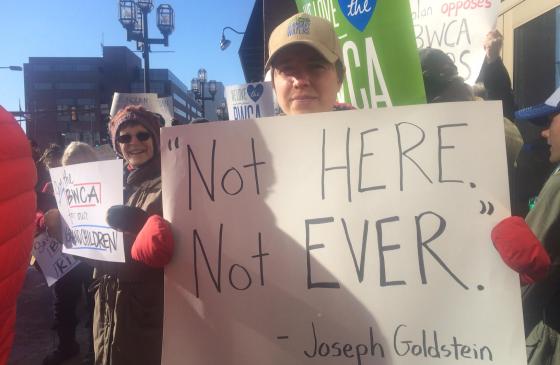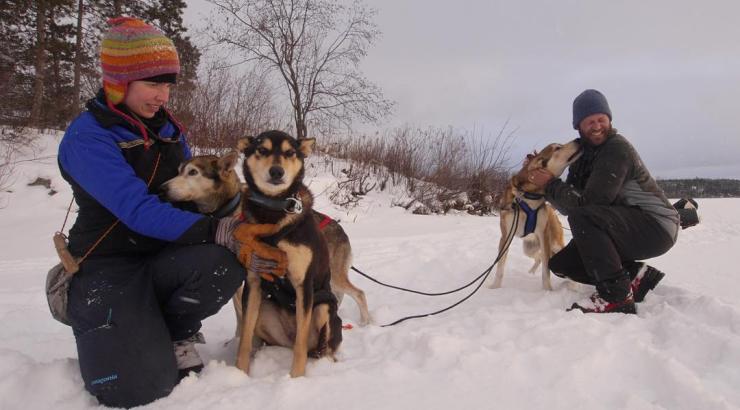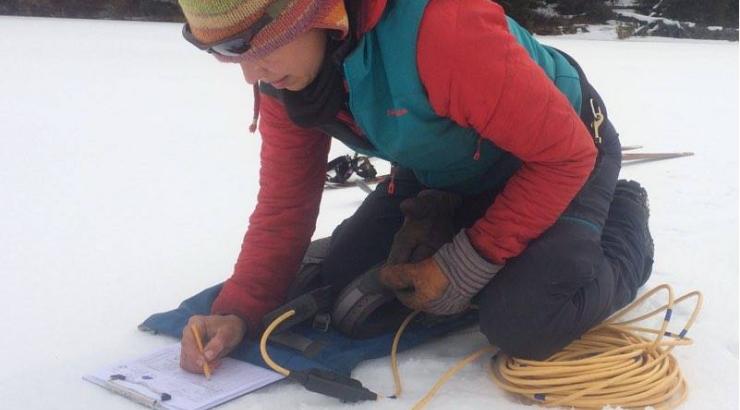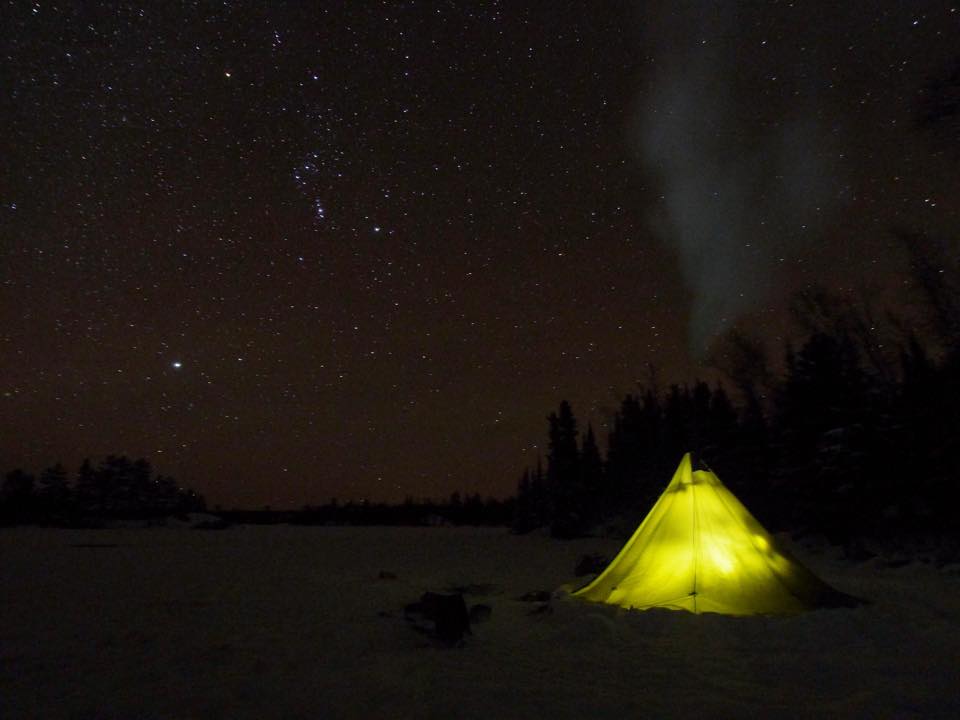 During our Year in the Wilderness, we often focused on the tranquil times, the silence, sunsets and countless beautiful moments that one encounters when they are immersed in Wilderness. Wilderness has many moods: blizzards that chill you to the bone, drenching rains that fill the canoe and leave you soggy, wondering if you will ever see the sun again. Then there are bugs, blisters and giant portage packs that send you wobbling down the portage trail. These uncontrollable factors are often the fuel for our most memorable and transformational Wilderness experiences.
During our Year in the Wilderness, we often focused on the tranquil times, the silence, sunsets and countless beautiful moments that one encounters when they are immersed in Wilderness. Wilderness has many moods: blizzards that chill you to the bone, drenching rains that fill the canoe and leave you soggy, wondering if you will ever see the sun again. Then there are bugs, blisters and giant portage packs that send you wobbling down the portage trail. These uncontrollable factors are often the fuel for our most memorable and transformational Wilderness experiences.
At this moment a year ago we found ourselves engulfed in one of those challenges as we made our way from Gun Lake to Tin Can Mike Lake. Traveling into a steady headwind, constantly scrapping frozen slush from our skis and toboggans and setting up camp by headlamp. We were tired when we zipped up our sleeping bags around midnight, but it's the hard days that stay with us long after we leave the Wilderness. Overnight calm weather and near perfect travel conditions had turned into a blinding blizzard and some of the hardest traveling conditions we experienced all winter. When we woke up in the morning, I immediately noticed large, but subtle patches of discoloration spread across the lake’s snowy surface. These slightly darker patches made my stomach churn because I knew that water was seeping through cracks in the ice and forming giant pockets of slush under the fresh blanket of snow covering the lake.
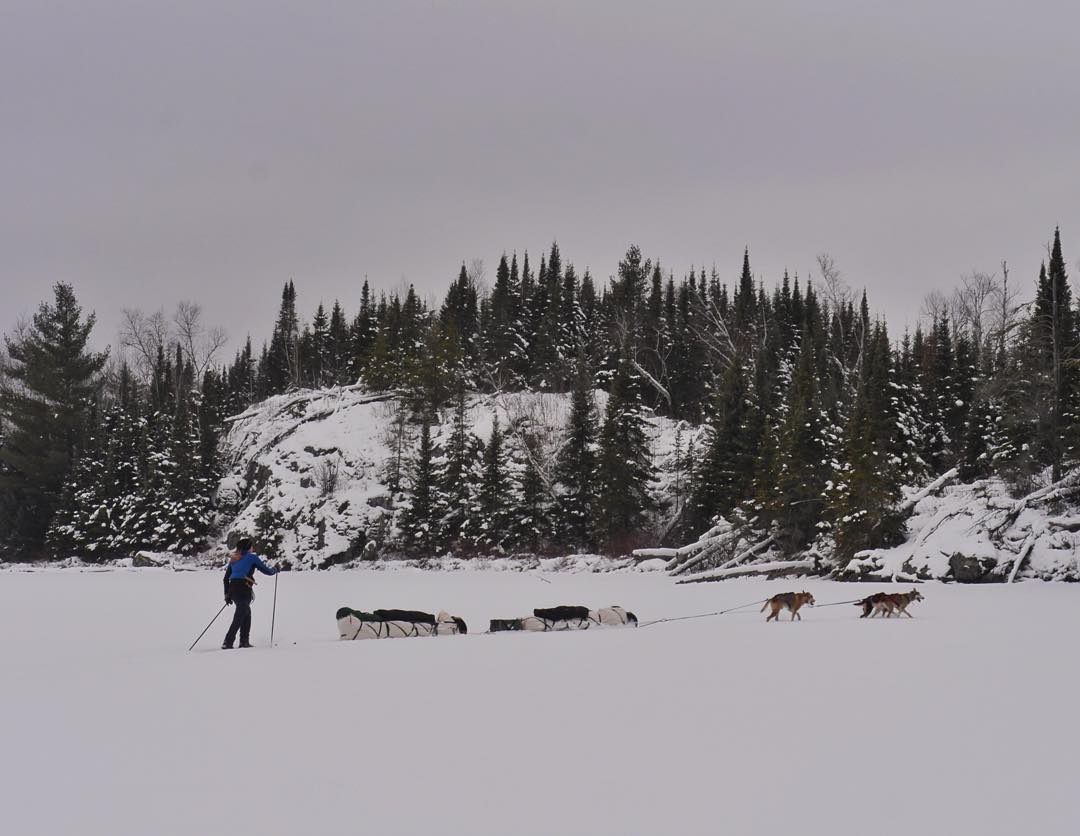 As soon as a ski, toboggan, boot, or dog paw broke through the snow, the slush would freeze to it and halt our progress as we worked with numb fingers to bang, scrape and in the case of the sled dogs’ paws, gnaw at the ice. Looking back on that hard day, and many others like it, I understand that these challenges are at the heart of why we venture into the Wilderness. It’s the raw power of nature reminding us of our place in the world and challenging us to become more resilient as we begin to understand our true potential.
As soon as a ski, toboggan, boot, or dog paw broke through the snow, the slush would freeze to it and halt our progress as we worked with numb fingers to bang, scrape and in the case of the sled dogs’ paws, gnaw at the ice. Looking back on that hard day, and many others like it, I understand that these challenges are at the heart of why we venture into the Wilderness. It’s the raw power of nature reminding us of our place in the world and challenging us to become more resilient as we begin to understand our true potential.
The challenges that Wilderness travel often afford are one of Wilderness's greatest (but often overlooked) assets, and are an important reason to protect Wilderness for future generations. I hope that the challenges that come with Wilderness travel will also give us the confidence and the resolve that we need when we encounter obstacles in our movement to permanently protect the Boundary Waters watershed from sulfide-ore copper mines.
Last week, Representative Rick Nolan sent a letter to the Trump administration urging them to halt the two-year scientific review of the impacts sulfide-ore copper mining would have on the Boundary Waters watershed. This reckless action by our elected official is not only anti-Boundary Waters, but it goes against science and public input.
In Nolan’s public statements since he sent that letter, he has been trying to say that he is pro-science and would never support mining that would hurt the Boundary Waters—even though he has sided with foreign mining companies for years and is trying to undermine the current scientific process and public input period that our public land management agencies already determined to be the best path forward.
 Last Thursday, we joined about 100 people outside Rick Nolan’s office in Duluth to stand up to his reckless actions and his false pro-Boundary Waters assertions. Like us, many of the folks were from Ely, and their jobs and way of life are at risk. Copper mines like Twin Metals would destroy our way of life and the resulting industrial mining zone and pollution would damage our pristine lakes and rivers—and kill our jobs.
Last Thursday, we joined about 100 people outside Rick Nolan’s office in Duluth to stand up to his reckless actions and his false pro-Boundary Waters assertions. Like us, many of the folks were from Ely, and their jobs and way of life are at risk. Copper mines like Twin Metals would destroy our way of life and the resulting industrial mining zone and pollution would damage our pristine lakes and rivers—and kill our jobs.
When we encounter stiff headwinds in the Wilderness, we dig in and paddle harder. When we encounter hurdles that aim to roll back the tremendous progress that has been made over the last couple of years to protect the Boundary Waters, we must dig deep and take action. Few things worth fighting for are easy and I hope you will draw strength from your Wilderness experiences and use that to actively fight for the protection of this national treasure.
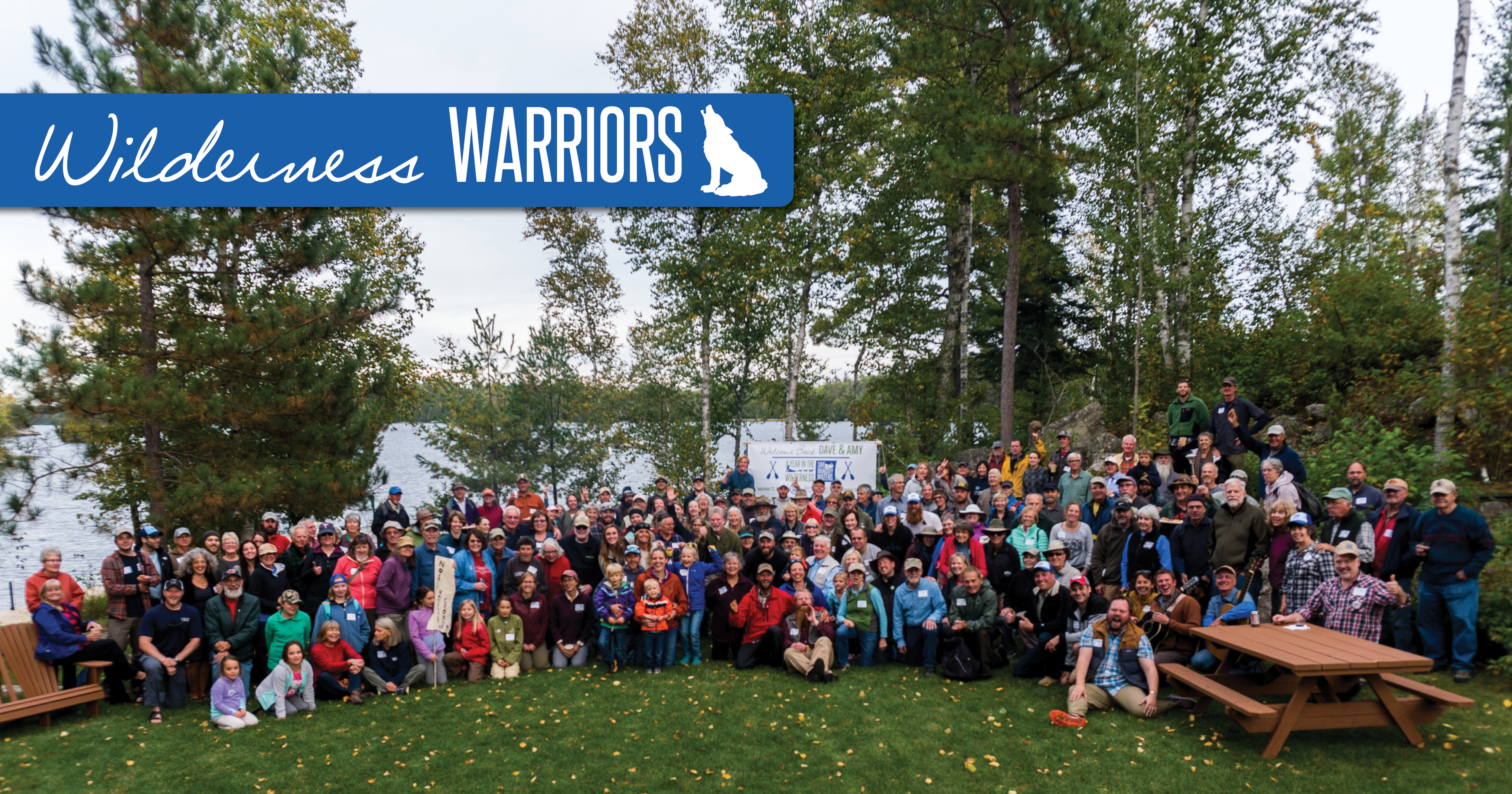 People have been asking us what else they can do after submitting a comment to the U.S. Forest Service. I think the best thing people can do at this moment is join our Wilderness Warriors group. It only takes a minute to sign up and each week the Campaign to Save the Boundary Waters will send you easy, impactful actions you can take from wherever you are. Together we’ll make sure key leaders are hearing from us and that we stand up to attacks from anti-BWCA forces trying to undo recent progress and expedite sulfide-ore copper mining on the edge of the Boundary Waters. And don't forget to comment during the environmental review if you haven't already.
People have been asking us what else they can do after submitting a comment to the U.S. Forest Service. I think the best thing people can do at this moment is join our Wilderness Warriors group. It only takes a minute to sign up and each week the Campaign to Save the Boundary Waters will send you easy, impactful actions you can take from wherever you are. Together we’ll make sure key leaders are hearing from us and that we stand up to attacks from anti-BWCA forces trying to undo recent progress and expedite sulfide-ore copper mining on the edge of the Boundary Waters. And don't forget to comment during the environmental review if you haven't already.
Dave and Amy Freeman, 2014 National Geographic Adventurers of the Year, are dedicated to protecting the Boundary Waters from sulfide-ore copper mining proposed on its wilderness edge. In 2014, they paddled and sailed 101 days and 2,000 miles from Ely, MN, to Washington, DC, on the Paddle to DC. From September 23, 2015 to September 23, 2016, the Freemans spent A Year in the Wilderness, camping at approximately 120 different sites, exploring 500 lakes, rivers and streams, and traveling more than 2,000 miles by canoe, foot, ski, snowshoe and dog team. They documented their year and will continue to share their stories on social media (@FreemanExplore, #WildernessYear) and in blog posts. A documentary about their journey, Bear Witness, premiered fall 2016. A book about their year will be published by Milkweed Editions in fall 2017.
